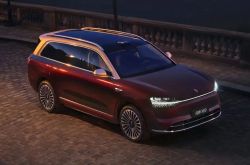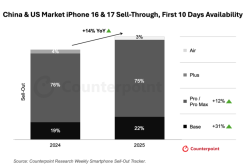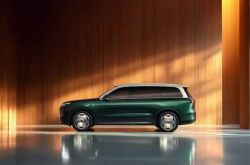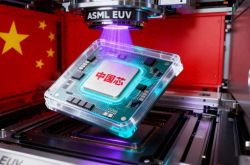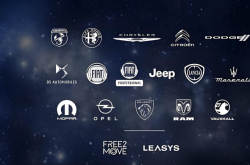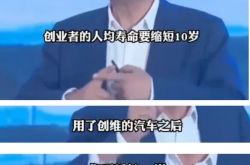Musk's Latest Satellite Launch? Tesla's Vision for Universal AI Autonomous Driving: A Breakthrough or Just Hype?
![]() 04/16 2025
04/16 2025
![]() 686
686
Introduction
Tesla CEO Elon Musk recently took to social media to announce, "Tesla is on the cusp of achieving a universal, full self-driving (FSD) solution powered solely by AI."
Upon hearing this, netizens swiftly toggled between "complaining" and "admiring" modes.
Some quipped, "Did Musk secretly rewatch 'Back to the Future' again?"
Others delved deeper, questioning, "Is Tesla poised to disrupt LiDAR with cameras and AI chips?"
As a leading player in autonomous driving, Tesla's every move sends ripples through the industry. However, Musk is no stranger to grand promises, from Mars colonization to brain-computer interfaces, robot taxis, and solar roofs, each stirring public discourse.
Is this bold proclamation of AI-driven autonomous driving the harbinger of a technological revolution or just another instance of "crying wolf"?
Today, No One Drives (WeChat official account: No One Drives) delves into the intricacies behind this announcement.
(For additional reading, click:
"Musk's Embarrassment at the Hands of Former Waymo CEO: Did Waymo Outshine Tesla in Autonomous Driving?")
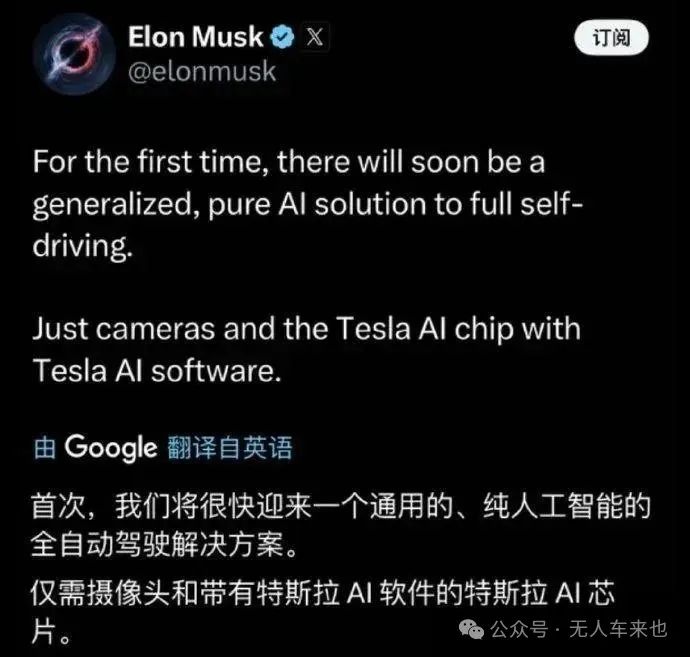
I. Pure AI Autonomous Driving: Tesla's "Nuclear Weapon" or "Paper Tiger"?
1. Musk's "Pure Vision Belief"
Tesla's autonomous driving strategy has always been unconventional: eschewing LiDAR in favor of cameras and AI chips.
Musk argues, "Humans drive with their eyes; why can't AI?"
This logic is straightforward yet profound, encapsulating Tesla's aspiration to maximize functionality with minimal hardware costs.
For instance, the camera setup in Tesla's Model 3 costs approximately $100, whereas LiDAR sensors cost thousands of dollars. If Tesla's pure AI solution proves successful, it could drastically reduce costs and outcompete rivals with its pricing advantage.
However, the question looms: Can cameras truly replace LiDAR?
2. LiDAR vs. Cameras: A Clash of "Sights"
LiDAR measures distance via laser pulses, offering high precision and robust anti-interference capabilities, making it the "eagle-eyed" choice for autonomous driving.
Cameras, however, rely on image recognition and are heavily influenced by lighting and weather conditions, becoming virtually "blind" in heavy rain or dense fog.
In 2021, a Tesla Model 3 in California rear-ended a truck during heavy rain due to the camera's failure to recognize the obstacle ahead.
In contrast, Waymo's LiDAR-equipped autonomous taxis performed robustly in similar scenarios.
In this "vision" battle, cameras clearly lag behind.
3. Data Reigns Supreme: Tesla's "Secret Weapon"
Yet, Tesla isn't without a fighting chance.
It boasts the world's largest autonomous driving dataset – by 2024, Tesla owners had collectively driven over 10 billion miles, equivalent to circling the Earth 400,000 times.
These data feed AI algorithms, refining Tesla's autonomous driving system daily.
For example, Tesla's "shadow mode" monitors human drivers in real-time and feeds correct decisions back to the AI, akin to an apprentice constantly "stealing skills."
II. Domestic "Crashes": Is FSD the "Bronze" or "King"?
1. Shanghai Owners' "Embarrassing" Experiences
Despite Tesla's rapid global expansion, the performance of its FSD function in China has left owners frustrated.
One Shanghai Tesla owner lamented, "After enabling FSD, my car drives like it's drunk – hesitating to change lanes, inconsistently following cars, and freezing when encountering tricycles."
Even more bizarrely, some owners have experienced "phantom braking" on highways, where the system misjudges an obstacle and slams on the brakes, nearly causing rear-end collisions.
These incidents have tarnished Tesla's autonomous driving reputation in China.
2. The "Double Whammy" of Policies and Road Conditions
Tesla's "acclimatization issues" stem not just from technology but also from policies and road conditions.
Policy restrictions: China has stringent regulations on autonomous driving road tests, limiting Tesla's freedom to test as it does in the US. Complex road conditions: From electric bikes weaving through non-motorized lanes to seasoned drivers abruptly changing lanes, Chinese roads are notoriously challenging.
Netizens joked, "Tesla's AI algorithm might not have learned to recognize 'Chinese-style jaywalking' yet."
3. Localization Challenges: Tesla's "Culture Lesson"
Autonomous driving is not just a technical challenge but a cultural one too.
For instance, Chinese drivers are accustomed to "cutting in," while Tesla's AI system adheres to "civilized yielding."
This "East-West divide" often leaves Tesla pondering philosophical questions at intersections, such as "Who am I? Where am I? Should I move?"
III. Industry Undercover Battles: Can Tesla's "Pure AI Revolution" Succeed?
1. The Counterattack of Traditional Carmakers: The LiDAR Alliance
Faced with Tesla's "pure vision" challenge, traditional carmakers have united.
BMW, Mercedes-Benz, and Audi jointly invested in LiDAR company Luminar, while Volvo partnered with Waymo to develop autonomous driving technology.
These carmakers firmly believe that LiDAR remains a "rigid demand" for autonomous driving.
As one carmaker executive noted, "You can do without LiDAR, but you can't guarantee perfect road conditions everywhere."

2. The Breakthrough of New Forces: Huawei's "Full-Stack Self-Research"
Domestic newcomers are also making waves.
Huawei's ADS 2.0 system employs a "fusion perception" approach, combining LiDAR, cameras, and millimeter-wave radars, boasting "day-night, rain, snow, and fog capabilities."
Remarkably, Huawei has drastically reduced LiDAR prices from tens of thousands to thousands of dollars, instantly narrowing Tesla's "cost advantage."
3. The Disruption by Tech Giants: Apple's "Project Titan"
Apple, too, is quietly making strides.
Its autonomous driving project, codenamed "Titan," has reportedly burned through billions of dollars. Though Apple's car hasn't hit mass production, its AI algorithms and chip technology could shake Tesla.
IV. Future Outlook: What is the Ultimate Form of Autonomous Driving?
1. Pure Vision vs. Fusion Perception: Who Will Win in the End?
Technically, pure vision and fusion perception are not mutually exclusive.
As a Tesla engineer put it, "The ultimate form of future autonomous driving may be 'vision-based, with radar assistance.'"
For instance, Tesla's next-generation autonomous driving system HW 4.0 quietly incorporated millimeter-wave radar, suggesting Musk might be "backpedaling" slightly.
2. User Trust: A Fortress Harder to Conquer Than Technology
No matter how advanced the technology, autonomous driving's adoption hinges on one question: Are users willing to use it?
Surveys show Chinese consumers trust autonomous driving at only 30%, significantly lower than the 60% in the US.
Earlier this year, there was buzz about the L3 autonomous driving inflection point and the popularization of intelligent driving, with consumer enthusiasm soaring. However, the Xiaomi SU7 accident significantly dampened this enthusiasm.
To reassure users about handing over the steering wheel to AI, carmakers must go beyond technological breakthroughs; they must also make safety commitments.
3. Law and Ethics: The "Sword of Damocles" Over Autonomous Driving
Finally, the legal and ethical challenges cannot be overlooked. For example, if an autonomous vehicle hits a person, who is responsible? How can AI systems avoid the "trolley problem" (saving one person or five)?
These questions perplex philosophers, let alone carmakers.
V. Conclusion: Should We Believe Musk's Promises?
Musk's greatness lies in turning sci-fi concepts into commercial realities (though sometimes belatedly).
The best attitude towards his "prophecies" might be "optimistic anticipation but cautious belief."
After all, Tesla's FSD success in China hinges not just on AI smarts but also on the cooperation of delivery riders, jaywalking seniors, and cutting-in drivers.
Is Musk's bold AI autonomous driving claim the precursor to a technological revolution or just another "empty promise"?
Perhaps the answer isn't crucial. What matters is that this technological race is bringing autonomous driving closer to reality.
In summary, No One Drives (WeChat official account: No One Drives) believes, as one netizen said, "Whether Tesla's claims are true or false, at least it's shown us the possibility of a fully autonomous driving future." As for whether the future belongs to Tesla or LiDAR, let's grab a stool and wait to see the outcome!
(Easter egg at the end: Do you think Tesla's pure AI autonomous driving can succeed? Share your thoughts in the comments section!)

